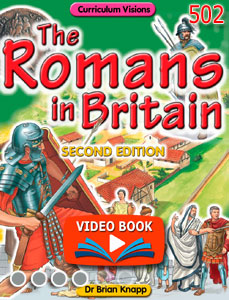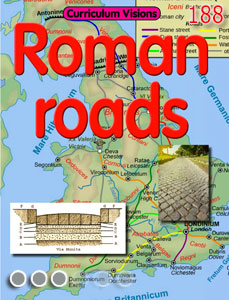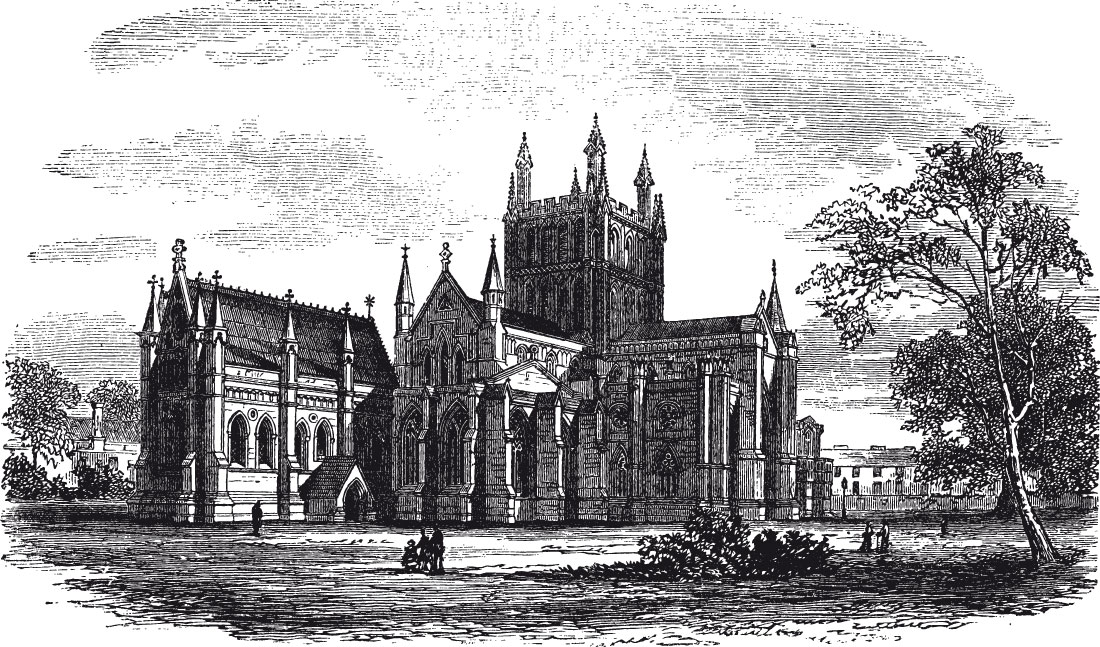Hereford is a cathedral city and county town of Herefordshire. It was founded at a crossing point of the River Wye, less than 30 miles from the border with Wales. It is a modest sized city, with just about 54,000 people living there.
Hereford was found in Anglo-Saxon times, probably in the 7th century. The name may mean 'a place where a large army crossed', or forded, the river, for the word 'here' was the Saxon name for an army.
The Welsh also called Hereford 'Henffordd', meaning "old road", and this looks back even further in time, to the nearby Roman Road that went into Wales, and which continued in use for centuries after the Romans departed.
Hereford was chosen as the home of a bishop in the 7th century, and this is why the cathedral was built. This also gave the city – for it had a cathedral – an importance which meant it became the Saxon capital of West Mercia by the 8th century.
Hereford was not thirty miles from the border in these times, but on the border. People who lived close to the border with Wales knew that skirmishes between small bands of men, and sometimes even armies, were to be expected. The main battle of this time is known as the Battle of Hereford in 760, when the Welsh defeated a Saxon army, and resulted in this part of Wales becoming independent of Saxon control. This division was later marked by King Offa, who built a bank and ditch which we now call Offa's Dyke.
By the 11th century, the Welsh supported the Vikings against the Saxons. It was at this time that the city, and its cathedral, was burned to the ground.
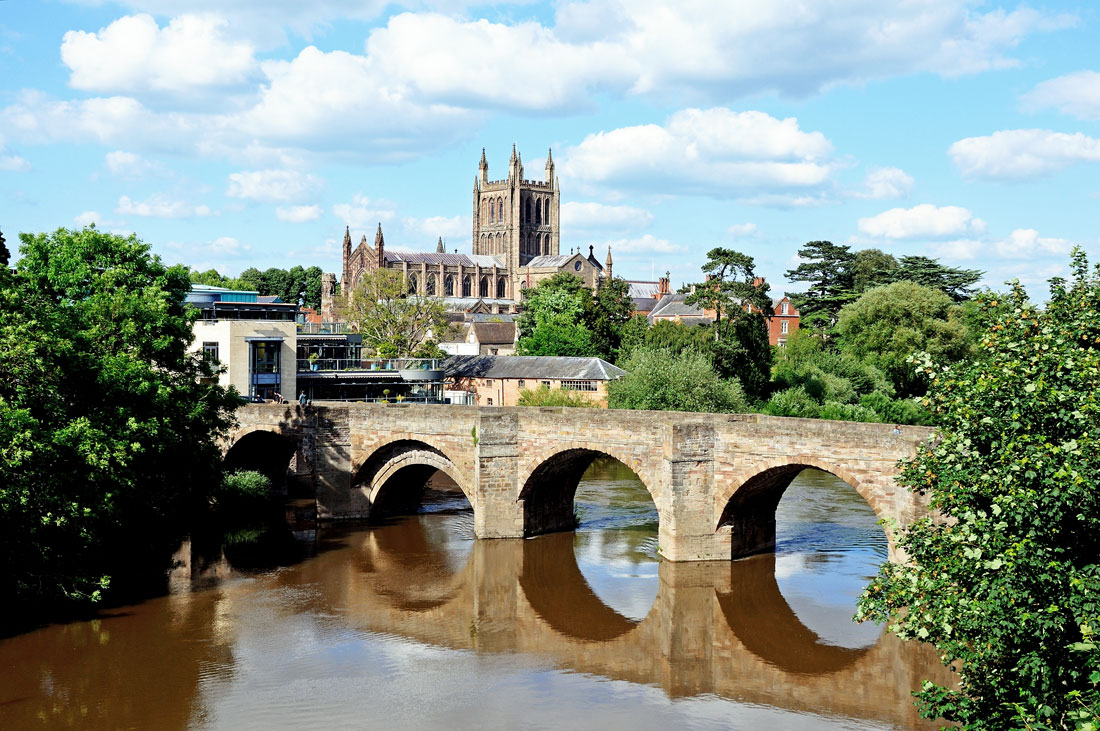
As Saxon times changed to Norman times, the lands around Hereford became the land of the Earl of Hereford, granted by William the Conqueror. The Norman earl built Hereford Castle. This castle was spoken of as being as grand as any castle in England. It was important to have a secure castle, because of its closeness to Wales. Its original importance is now marked by Castle green, all stonework having been taken away long ago. City walls were also a necessity in medieval times, and you can still see the remains of the walls if you travel along the main city bypass road.
By the 12th century Hereford was rebuilding its cathedral and building its first stone bridge over the river. You can see both in the city centre even today. Hereford Cathedral School is also one of the oldest schools in England.
Hereford was becoming a prosperous town in the west of England, and in 1189 it was granted a charter to hold fairs and markets by Richard I of England.
Throughout Medieval times Hereford continued to prosper, based on trading in wool from sheep grown in nearby hills. Many Tudor-style buildings between the cathedral and the old bridge are a reminder of these times.
Hereford was too far west to grow during the Industrial Revolution, although a canal was built to link to Gloucester. Its purpose was to carry corn from the fields and bring in coal.
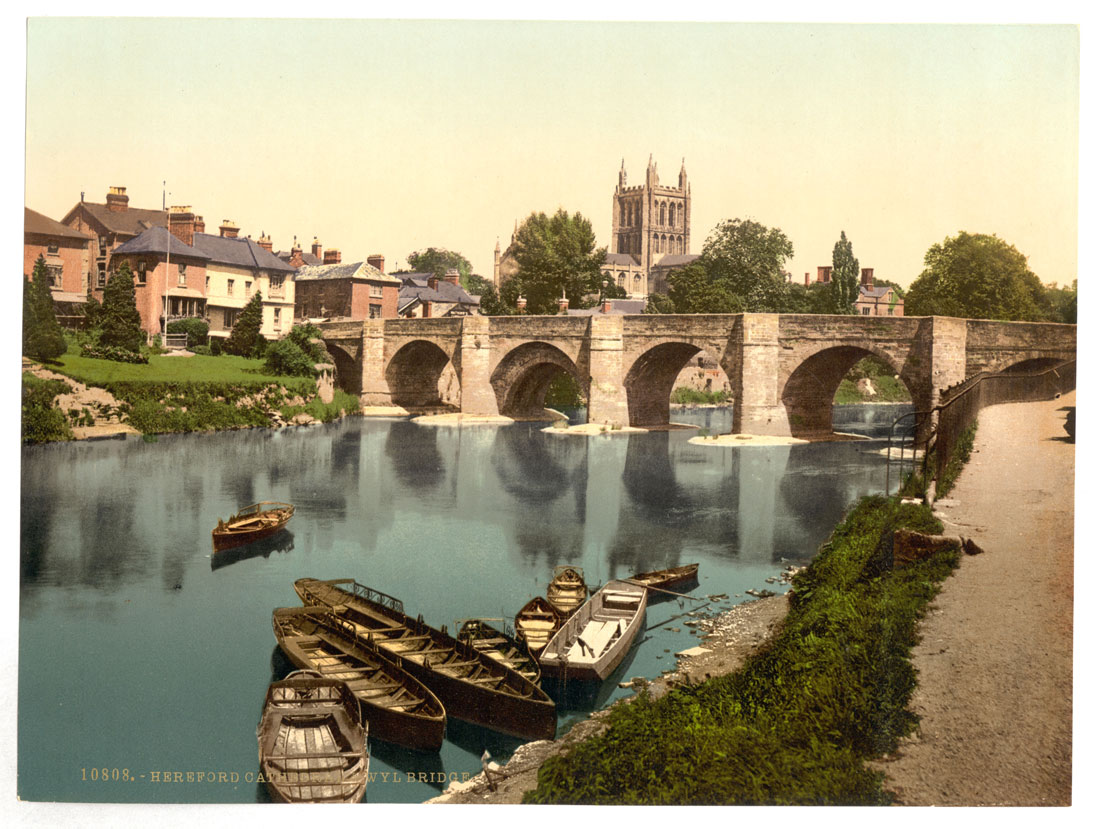
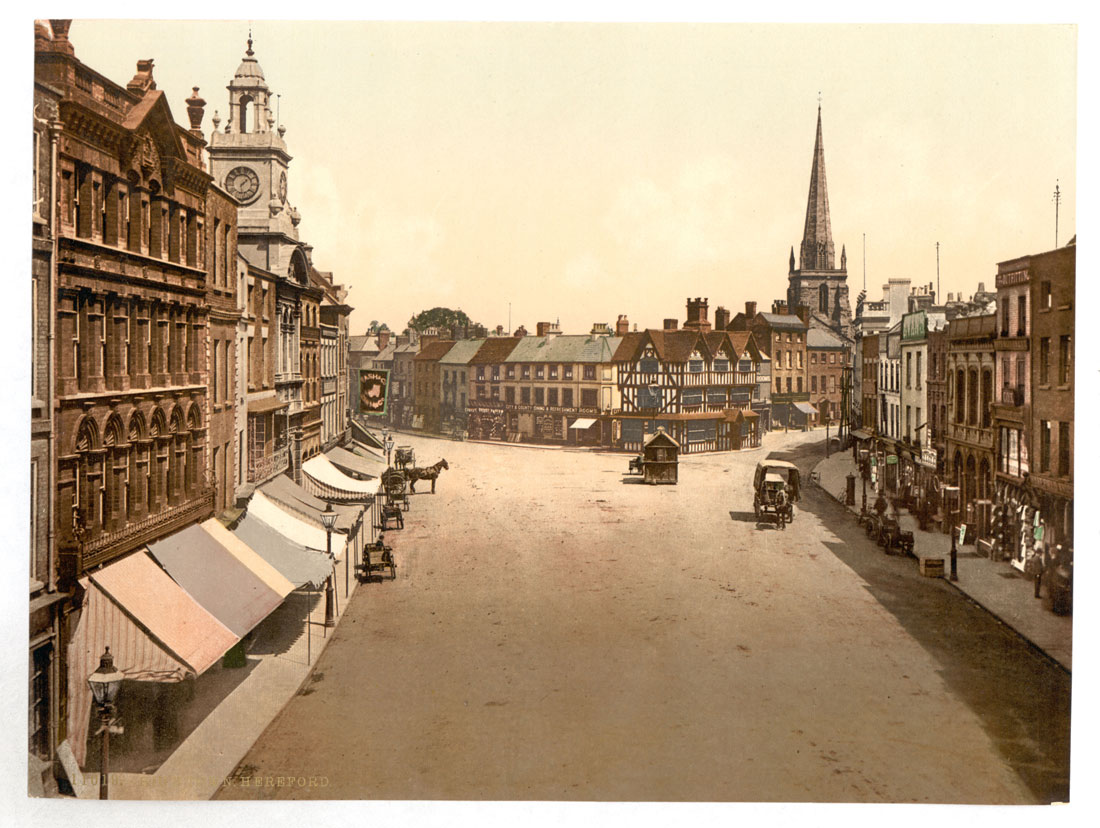
Today Hereford continues to be a city mainly connected with its farmland, It is famous for cider makers and brewers, and the Hereford beef cattle breed comes from this area.
Hereford is likely to change considerably in the future, as planners have chosen to build some 10,000 homes on the outskirts of the city.
